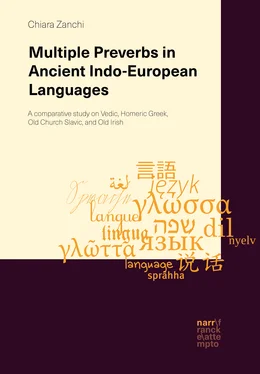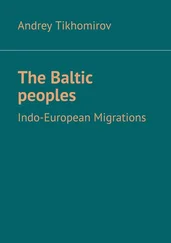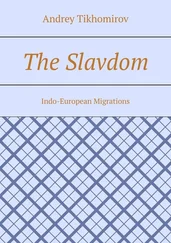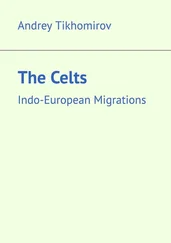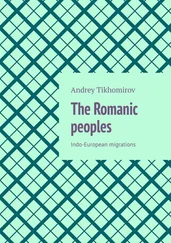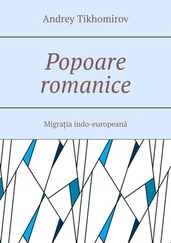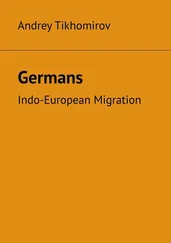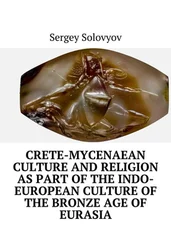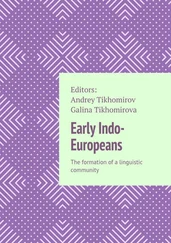Furthermore, the R̥g-Veda , the Homeric poems, and the Old Church Slavic texts represent literary corpora, in terms of their content and aims. Thus, their variety most likely does not faithfully mirror the actual usages of everyday speech (cf. Joseph & Janda 2003: 17–19). In addition, the Vedic hymns and the Homeric poems constitute poetic corpora. As such, they have to meet relatively rigid metrical requirements, which possibly also contributed to distancing the language from daily usage. Occasionally, meter might both constrain syntax in general, and word order in particular, as well as motivate otherwise obscure lexical choices (cf. Chapters 4 and 5, for further discussion and relevant examples).
For the Old Church Slavic texts and for the Old Irish glosses, one must take into account their undeniable interaction with the Greek source- and the Latin main texts. Thus, further issues relating to the employment of parallel (or quasi-parallel) corpora come into play, which have been touched upon in Sections 1.3.3 and 1.3.4, and further discussed in Chapters 6–7. However, with regard to our understanding of the formation process of multiple preverb composites, Greek and Latin equivalents have proved to be crucial, in that they can provide access points to the various degrees of lexicalization and semantic change affecting multiple preverb composites.
2. Theoretical background: Analytical tools for the study of preverbs
2.1. Cognitive Grammar
In this work, I adopt the theoretical framework of Cognitive Grammar, in which grammatical forms are conceived as meaningful: the difference between grammatical and lexical meanings essentially lies in their degree of abstractness. Thus, syntax and semantics are understood as a continuum : “lexicon and grammar form a gradation consisting solely in assemblies of symbolic structures” (Langacker 2008: 5). The meanings of the elements of grammar emerge as the concepts associated with linguistic expressions. Such concepts are grounded on elementary semantic structures, which in turn are based on humans’ perception and spatio-physical experience (cf. e.g. Talmy 1983; Lakoff 1987; Langacker 1987), as shown in Section 1.1.
2.1.1. Space: the basic domain of human cognition
Human beings’ perception, experience, and conceptualizations are mediated and constrained by human bodies: this is what is meant by “embodiment” and “embodied cognition”. Embodied experience gives shape to conceptual structure: the world, as sensed by organs of perception, constitutes the basis of conceptual structure, that is, of human thoughts and concepts (cf. among many others, Lakoff 1987; Lakoff & Johnson 1980; Langacker 1987; Svorou 1994). Furthermore, if embodied experience shapes our conceptual structure, it must also constitute the foundation of meaning, that is, of concepts expressed by means of human language. This implies that meaning must be mediated through human perception: all concepts, both concrete and abstract, are grounded in terms of spatio-physical experience.
Therefore, in Cognitive Grammar, space is regarded as one of the basic domains of human cognition, as it does not seem to be understood through other cognitive domains, and provides the basis for understanding other more abstract domains (Lakoff & Johnson 1980). More generally, any set of concepts that cannot be described by means of another set of concepts can be regarded as a basic domain. By contrast, any domain that needs at least one other domain to be conceptualized is abstract (Croft 1993).
Linguistic forms, which are humans’ means for expressing thoughts and concepts, are initially associated with a concrete and spatial meaning, which constitutes the starting point for developing more abstract meanings and functions. The mapping from a concrete to an abstract conceptual domain is possible thanks to the cognitive mechanisms of metonymy and metaphor. Importantly, several metonymic and metaphorical meanings are regularly associated with specific linguistic sources, and later on conventionalized (cf. Section 2.1.2). In conventionalized lexical items, it can become difficult to trace back to the original spatial meaning, or to understand the links between the developed abstract and the basic spatial meanings from a synchronic point of view (cf. Section 2.2.5 on lexicalization; Chapters 6 and 7 on Old Church Slavic and Old Irish preverbs for cases in point). Thus, a given linguistic form is usually polysemous: each of its meanings can rely on the basic or on the abstract domains that pertain to that linguistic form. All meanings of a linguistic form are organized around its basic meaning in what can be called “structured polysemy” (e.g. Tyler & Evans 2003): meanings directly or indirectly relate to the center or to each other in a motivated radial structure (e.g. Lakoff 1987).
2.1.2. Going from spatial to abstract domains: metaphor and metonymy
Metaphor is a way to conceptualize a cognitively difficult domain in terms of an easier domain; in other words, through metaphor it is possible to understand “conceptually complex phenomena in terms of less complex ones” (Claudi & Heine 1986: 299). Thus metaphor establishes a mapping between two different conceptual domains that, despite being equated, remain distinct (Croft 1993). Examples (1)–(2) show two different uses of the English preposition in :
1 Luke is in the kitchen.
2 Luke is in love .
Sentences (1) and (2) contain similar linguistic items: the proper name Luke , the third person singular of the verb to be , the preposition in , and a common noun, kitchen in (1), determined by the article the , and love in (2). However, while the noun kitchen denotes a real Location where Luke is, the noun love denotes a state that Luke experiences. Thus, the same verb to be and the same preposition in express a spatial relation in (1), but a metaphorical relation in (2). This shift toward the abstract plane is accounted for by conceptual metaphor: the room kitchen physically contains Luke ; in a comparable way, the state of being in love is understood as a container in which Luke is metaphorically located. As Lakoff & Johnson (1980: 32ff.) point out, the same metaphors can be responsible for multiple semantic changes: for example, states are often conceptualized as containers (the so-called “Container metaphor”). Within this work, this tenet is borne out both within a single language and also across different languages: Sections 4.4, 5.4, 6.4, and 7.4 are devoted to the semantics of multiple preverbs, Chapters 4–7 show that morphemes with similar basic spatial meanings also tend to develop similar abstract meanings (cf. further Chapter 8).
Metonymy occurs when an entity of a certain conceptual domain is referred to by means of an entity belonging to a contiguous or identical conceptual domain (Lakoff & Johnson 1980: 29; Croft 1993). Within the same domain, such entities are connected by means of humans’ encyclopedic experience (Lakoff 1987). For example, in (3) below, the expression the ham sandwich does not refer to an actual sandwich, rather to the person who ordered it. The entity ham sandwich belongs to the conceptual domain that can be labelled as [CUSTOMER], because a customer in a restaurant is presumed to order something to eat or drink.1
1 The ham sandwich is waiting for his check .
Notably, example (3) cannot be regarded as a case of personification metaphor, given that human qualities are not ascribed to the said sandwich. Rather, the sandwich is a part of the conceptual domain of the person ordering it. By contrast, example (4) contains an istance of personification:
Читать дальше
